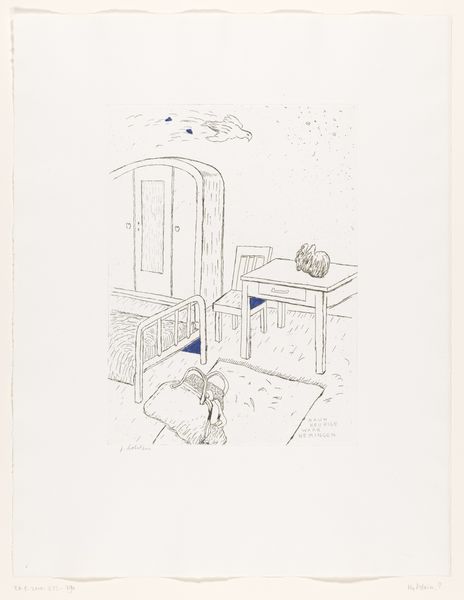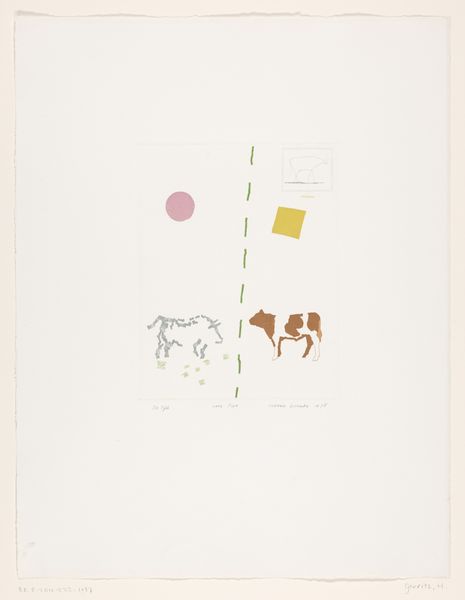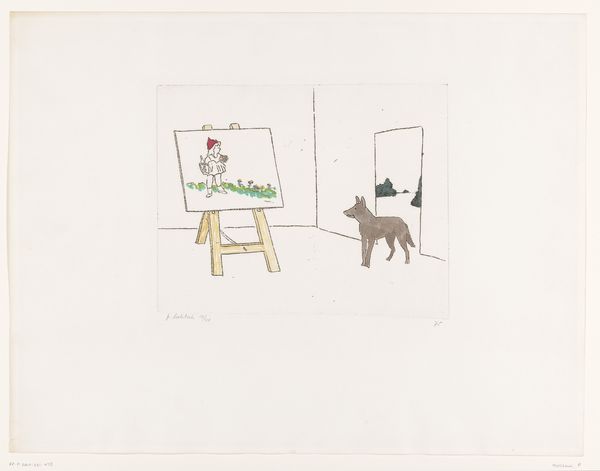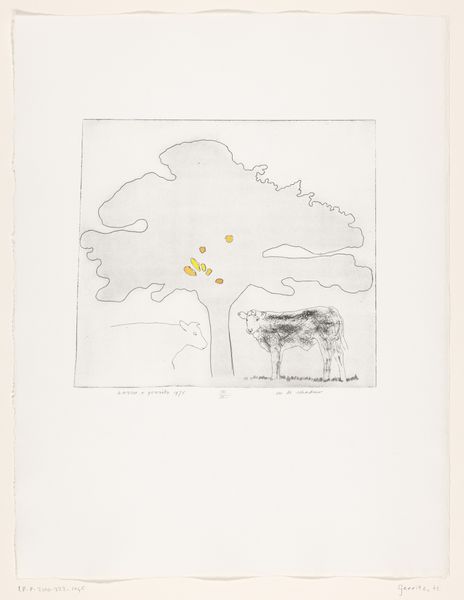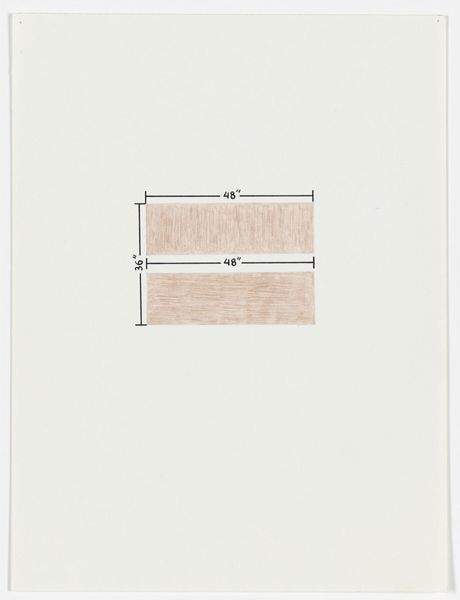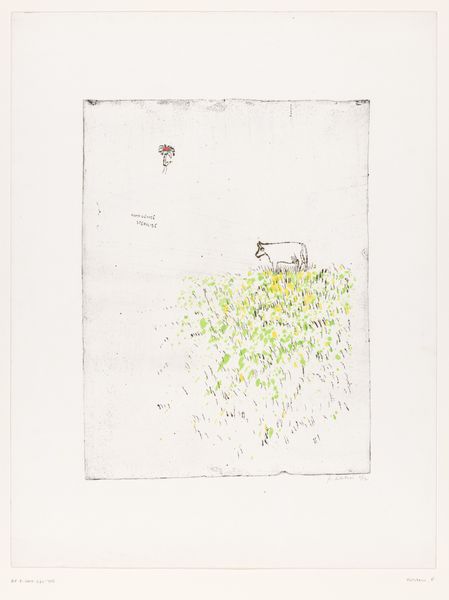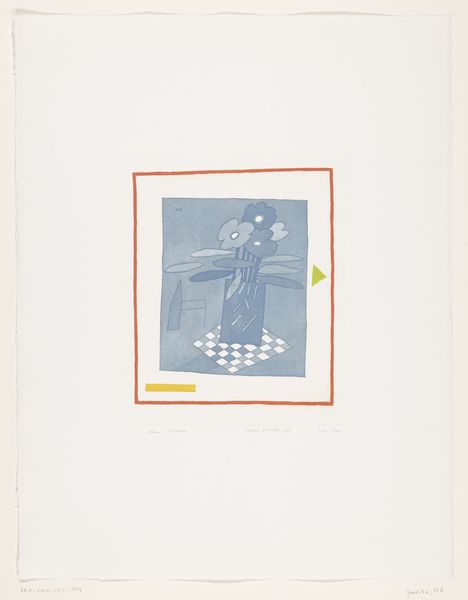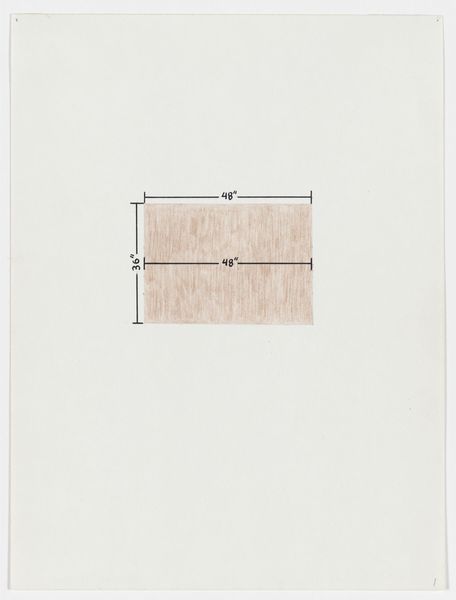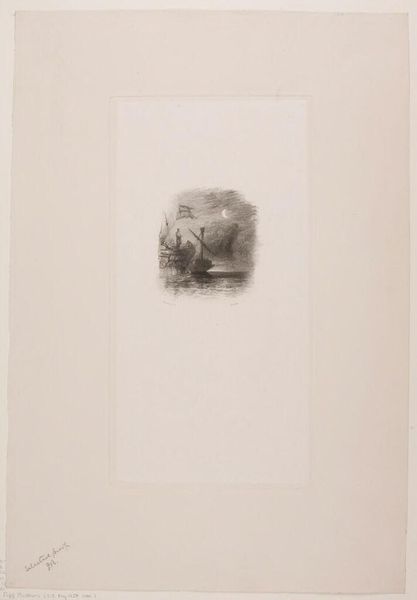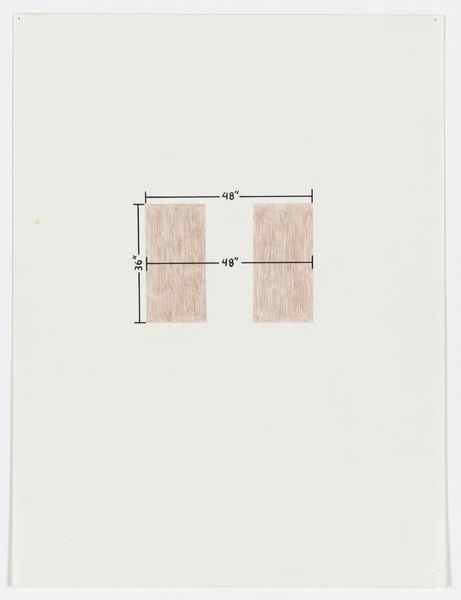
print, paper, ink
#
tree
#
ink paper printed
# print
#
light coloured
#
old engraving style
#
landscape
#
paper
#
ink
#
geometric
Dimensions: height 654 mm, width 506 mm, height 384 mm, width 330 mm
Copyright: Rijks Museum: Open Domain
Curator: Let’s discuss "Feodaal landschap met knotwilgen," or "Feudal Landscape with pollard willows," a 1975 print by Harrie A. Gerritz, found here at the Rijksmuseum. It’s an intriguing piece. Editor: It has such a quiet melancholy, doesn’t it? The sparse composition, the almost childlike rendering of the trees, it feels fragile and wistful. The light-colored paper helps add to that impression. Curator: Absolutely. Gerritz's work often explores the intersection of rural life and the structures that govern it. In this print, you see the influence of the artistic climate in the Netherlands at the time—a questioning of traditional landscapes. This period saw a growing interest in art's political and social roles. Editor: Yes, the materiality speaks volumes. He chose printmaking—a medium capable of mass production—to depict a "feudal landscape." The materials of ink and paper offer a direct connection to artistic labor. Look at how much of the paper isn't touched, as though raw potential remains untouched on purpose! Curator: Exactly. It's not a celebration of rural idyll, but rather an examination of power dynamics in the Dutch landscape tradition. Editor: Note too that top band of flat, applied color...It brings forward the printmaking itself. I’m left pondering the means and costs of producing landscape depictions and to whom they are made available! Curator: I agree. He's questioning what landscape art *is* in a rapidly changing society. This image subtly prompts us to ask: whose land is it, really? And who benefits? Editor: Thinking about materials helps solidify those notions about landscape depictions as something both ideological and, well, produced! Something someone *makes*... Curator: Indeed. The placement within the Rijksmuseum continues this dialogue by solidifying its importance to this story of Dutch identity. Editor: Ultimately, it leaves me considering how land continues to be valued, distributed, and represented even today. Curator: For me, it highlights art’s enduring capacity to challenge us and provoke deeper consideration about the landscapes we inhabit and the stories they hold.
Comments
No comments
Be the first to comment and join the conversation on the ultimate creative platform.



